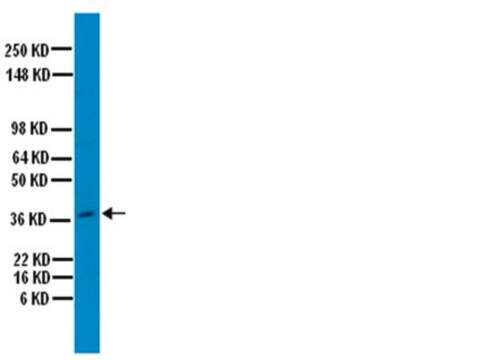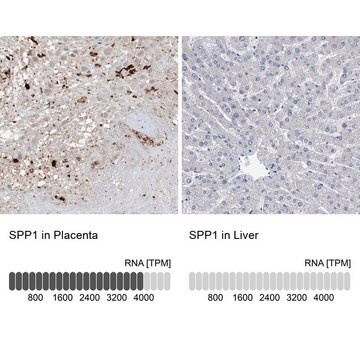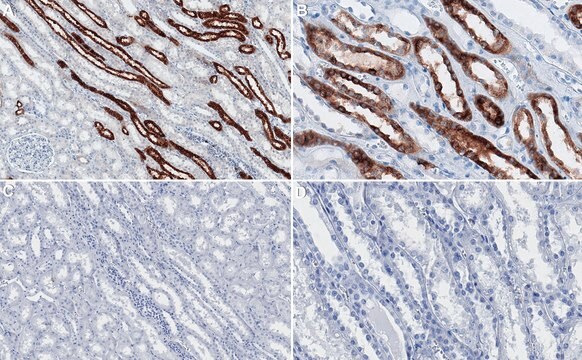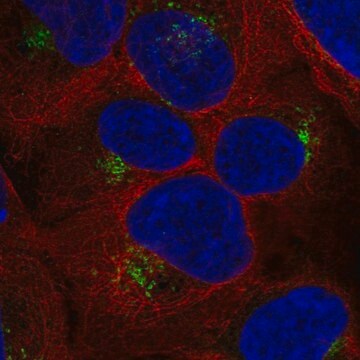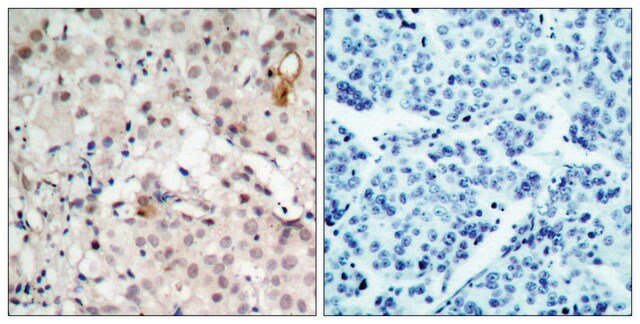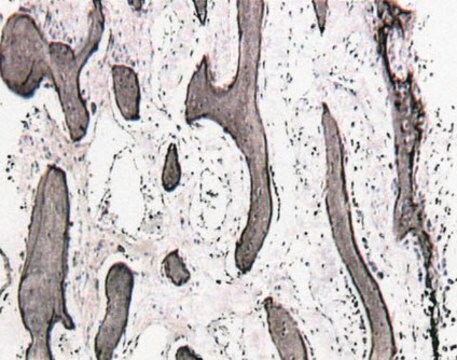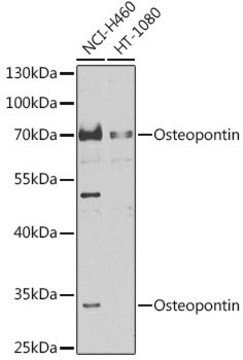AB10910
Anti-Osteopontin Antibody
serum, from rabbit
Synonym(s):
Bone sialoprotein 1, SPP1/CALPHA1 fusion, Urinary stone protein, bone sialoprotein I, osteopontin/immunoglobulin alpha 1 heavy chain constant region fusion protein, secreted phosphoprotein 1, secreted phosphoprotein 1 (osteopontin, bone sialoprotein I, e
About This Item
Recommended Products
biological source
rabbit
Quality Level
antibody form
serum
antibody product type
primary antibodies
clone
polyclonal
species reactivity
mouse, human
technique(s)
immunohistochemistry: suitable
western blot: suitable
NCBI accession no.
UniProt accession no.
shipped in
wet ice
target post-translational modification
unmodified
Gene Information
human ... SPP1(6696)
General description
Specificity
Immunogen
Application
Cell Structure
Cytoskeleton
Quality
Western Blot Analysis:
1:500 - 1:5,000 dilution of this antibody detected osteopontin in 10 μg of mouse kidney lysate.
Target description
Physical form
Storage and Stability
Analysis Note
Mouse kidney, COS-1 and human urine lysate
Disclaimer
Not finding the right product?
Try our Product Selector Tool.
Storage Class Code
10 - Combustible liquids
WGK
WGK 1
Certificates of Analysis (COA)
Search for Certificates of Analysis (COA) by entering the products Lot/Batch Number. Lot and Batch Numbers can be found on a product’s label following the words ‘Lot’ or ‘Batch’.
Already Own This Product?
Find documentation for the products that you have recently purchased in the Document Library.
Our team of scientists has experience in all areas of research including Life Science, Material Science, Chemical Synthesis, Chromatography, Analytical and many others.
Contact Technical Service